-
 2020s Pie Chart
2020s Pie Chart Pie chart showing number of creative theses in the 2020s broken down by genre
-
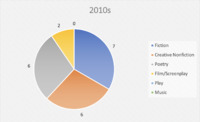 2010s Pie Chart
2010s Pie Chart
-
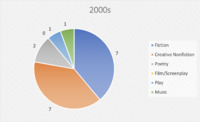 2000s Pie Chart
2000s Pie Chart
-
 1990s Pie Chart
1990s Pie Chart
-
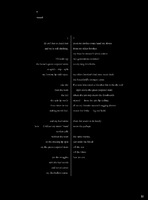 2020: “college bound black boy” by Maurice Norman ’20
2020: “college bound black boy” by Maurice Norman ’20 Maurice Norman ’20’s collection of poems titled “college bound black boy” contains twenty original poems. They employ several creative devices from word structuring and formatting to rhetorical devices such as alliteration, consonance, and assonance. Present themes include race, family, childhood, nostalgia, and reflection.
-
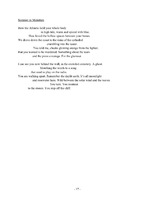 2019: “Drown, Darling” by Leah Mell ’19
2019: “Drown, Darling” by Leah Mell ’19 “Drown, Darling” by Leah Mell ’19 is a collection of poems — most incorporating death as a theme. Hollywood imagery also appears frequently among the poems, combining the ideas of mortality and performance. Mell’s poems demonstrate the exploration of darker themes as a component of creative expression in English honors theses.
-
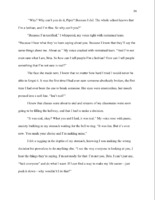 2018: “On the Outside” by Emily Yates ’18
2018: “On the Outside” by Emily Yates ’18 “On the Outside” by Emily Yates ’18 is a collection of four short stories following a gay man struggling to trust again after being sexually assaulted, a high schooler terrified of coming out, a married woman looking to spice up her marriage, and a lesbian woman looking for closure from her homophobic family after her father’s death. Raw and emotional, common themes among these stories include dealing with bigotry and homophobia, exploring sexuality, and the complexities of romantic relationships.
-
 2018: “The Division” by Cordelia Wilks ’18
2018: “The Division” by Cordelia Wilks ’18 For her senior thesis, Cordelia Wilks ’18 creates a documentary film exploring Davidson Athletics — its culture, talent, and long-term goals as compared to other Division I schools. Wilks is the first student to make a film as an English honors thesis since the first one by Jason Ferris in 1999. In 2021, she remains the only female student to do so. During Wilks’ time at Davidson, two visiting McGee professors are filmmakers: Ali Selim and Thomas Gilroy. The presence of these two filmmakers at Davidson reflects student demand for film professors, likely stemming from Dr. Zoran Kuzmanovich’s course Film as a Narrative Art and Dr. Paul Miller’s course Documentary Film.
-
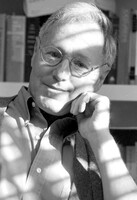 2016: Abbott English Honors Program Founded
2016: Abbott English Honors Program Founded The Abbott English Honors Program is established in 2016 through the generous donation of Professor Tony Abbott and his wife Susan. After teaching at Davidson for nearly four decades, Professor Abbott is credited with much of the department's development in creative writing. With these additional funds, the Abbott English Honors Program will provide even more support and structure for English majors pursuing both critical and creative honors theses.
-
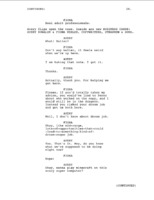 2015: “Be Nice: Reconsidering the Female Sitcom Lead and an Original Pilot” by Anne Sellers ’15
2015: “Be Nice: Reconsidering the Female Sitcom Lead and an Original Pilot” by Anne Sellers ’15 In 2015, Anne Sellers ’15 writes a screenplay as one half of her thesis, following a critical piece on Mindy Kaling’s show The Mindy Project. Sellers’ screenplay, “Be Nice,” follows a young female intern at an advertising agency as she tries to balance her career ambitions with a determination to remain honest and true to herself. Sellers aims to create a character “who both occupies a realistic subject position and radically subverts it, and can reach viewers in such a way that they begin to understand better and evaluate more thoughtfully their own social experience” (Sellers 17). In her acknowledgement, Sellers thanks the 2015 McGee Professor, award-winning director and screenwriter Ali Selim. She writes, “I will remember what he taught me as long as I consider myself a writer” — again showing the positive impact of visiting creative writers on student interest in the subject (iii).
-
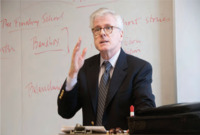 2012: Thomas Mallon as McGee Professor of Creative Writing
2012: Thomas Mallon as McGee Professor of Creative Writing In the spring of 2012, novelist, essayist, and critic Thomas Mallon joins the English department as the visiting McGee professor. Mallon is the author of eight novels, several nonfiction books, and two collections of essays. He teaches ENG 301: Creative Nonfiction and ENG 304: Writing Fiction 2. His goal for these two courses is for his students to “understand some sense of the relationship between fiction and nonfiction, particularly as a narrative” (Lewis 1).
-
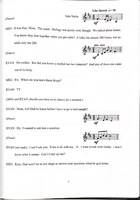 2009: “Playing Hide and Seek” by David M. Palko ’09
2009: “Playing Hide and Seek” by David M. Palko ’09 In 2009, David Palko writes a play for his English honors thesis entitled “Playing Hide and Seek.” This play is performed live on April 6, 2009 in Tyler-Tallman Hall of the Sloan Music Center. The play follows the story of a brother and sister and their father. In Palko’s words, “Unlike a typical domestic drama, however, this story takes place in the psyche, following Ryan [the brother] through a reflective reverie. As a result, the action fluidly fluctuates between memories that can be validated and imagined past events, at times blurring the two” (Palko 42). Music also plays a large role in this production, acting as a “soundtrack to Ryan’s thoughts” (Palko 45). Rona Munro serves as Palko’s reader for this project.
-
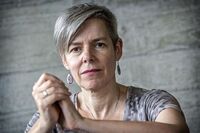 2008: Rona Munro as McGee Professor of Creative Writing
2008: Rona Munro as McGee Professor of Creative Writing In the fall of 2008, the McGee Professor of Creative Writing is Rona Munro, a Scottish playwright with experience writing for theatre, radio, and television. During her time at Davidson, she and her students collaborate with the Royal Shakespeare Company to put on a production of her play Little Eagles. Munro also teaches introductory and advanced courses on writing plays.
-
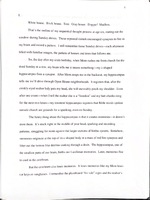 2005: “Five-Point Turn” by David Pope ’05
2005: “Five-Point Turn” by David Pope ’05 “Five-Point Turn” by David Pope ’05 is a childhood memoir filled with memories about Pope’s family. The piece is written with a personal tone, reflecting how students embrace memoir as a genre of self-expression within creative nonfiction. Scientific terms and references are also incorporated into the writing, potentially showing a researched element of the piece.
-
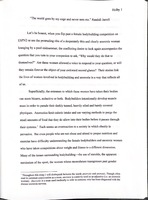 2004: “The Cage: The Lives and Experiences of Female Bodybuilders and Anorexic Women” by Alison Marie Holby ’04
2004: “The Cage: The Lives and Experiences of Female Bodybuilders and Anorexic Women” by Alison Marie Holby ’04 Alison Marie Holby ’04’s English honors thesis entitled “The Cage: The Lives and Experience of Female Bodybuilders and Anorexic Women” is an example of literary journalism guided by Dr. Lewis’s teachings. In this project, Holby explores how female bodybuilders and anorexic women respond to cultural expectations of women in different yet related ways. Literary journalism departs from traditional journalism in the sense that it blurs a line between objectivity and subjectivity, often placing the writer and their experiences into the story. Structurally, these pieces are organized like fiction, with plot and arc, in order to create a story and engage the reader. Literary journalism aims to inspire the reader to look at some aspect of the world — in Holby’s case, “gendered expectations about body and performance” — in a slightly different way (Holby 2).
-
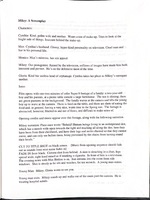 1999: “Mikey: A Screenplay” by Jason Ferris ’99
1999: “Mikey: A Screenplay” by Jason Ferris ’99 In 1999, Cornwell Scholar Jason Ferris produces the first screenplay and film ever created as an English honors thesis. His project, “Mikey: A Screenplay,” is about a young man, freshly eighteen, who has aged out of the orphanage he grew up in and befriends a bored suburban housewife whose husband is cheating on her. In the preface to his screenplay, Ferris explains that his work reflects questions about subjectivity and media and whether the former can exist in a world dominated by the latter.
-
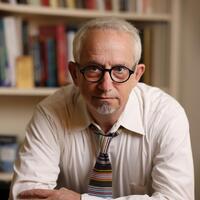 1998: Professor Alan Michael Parker Arrives at Davidson
1998: Professor Alan Michael Parker Arrives at Davidson Professor Parker is hired by the English department in 1998 as the coordinator of the literary calendar, marking an increased commitment to bringing creative voices to campus. Parker begins his Davidson career teaching Introduction to Creative Writing with a focus on poetry and fiction, reflecting his personal interests and practices as a creative writer. This course, like all other creative writing classes at the time, requires “permission of the instructor based upon review of writing samples.” Professor Parker is the author or editor of eighteen books and has edited five scholarly works. Additionally, he has published over 250 poems and stories to numerous journals, many of which have been awarded with various forms of recognition.
-
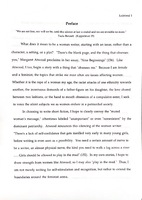 1996: “Breaking the Silence: Five Stories from Contemporary Women” by Laura Susan Leibfreid ‘96
1996: “Breaking the Silence: Five Stories from Contemporary Women” by Laura Susan Leibfreid ‘96 In “Breaking the Silence: Five Stories from Contemporary Women” by Laura Susan Leibfreid, each short story features one of the author’s chosen themes: rape, racism, incest, lesbianism, and eating disorders. The stories are titled “Casanova,” “Cricket Prey,” “Call me Lolita,” “Me An Jo,” and “There’s a Monster in my Mouth.” Combined, they contribute to a larger feminist narrative. This thesis reflects creative self-expression through fiction as the author notes her passion for feminism in the preface.
-
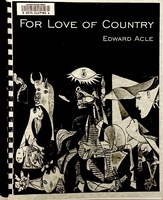 1996: "For Love of Country" by Edward Acle ’96
1996: "For Love of Country" by Edward Acle ’96 Following in Patricia Cornwell’s footsteps, Edward Acle writes a novel for his senior thesis — a work of historical fiction set in Trinidad in the first half of the nineteenth century with a focus on themes of family, patriotism, love, and war. This project is directed by Dr. Abbott who, throughout Acle’s four years at Davidson, has been teaching an introductory creative writing course with a focus on fiction and poetry, which Acle likely took.
-
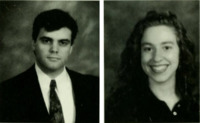 1996: First Creative Thesis Since 1979
1996: First Creative Thesis Since 1979 By 1995, Dr. Campbell has successfully petitioned to have ENG 201 raised to a 300-level course focused on intermediate-level creative nonfiction writing. Together, Dr. Campbell and Dr. Lewis continue using ENG 201: Expository Prose for other types of nonfiction writing, including community-based publications and professional writing. By the turn of the century, creative writing courses are offered from the 200 to the 400 level, showing an expanding desire to bring creative pursuits into the classroom. New interests among the faculty, such as creative nonfiction, will also open doors for student creative writers.
-
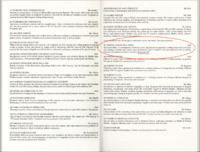 1995: ENG 301: Creative Nonfiction is Born
1995: ENG 301: Creative Nonfiction is Born By 1995, Dr. Campbell has successfully petitioned to have ENG 201 raised to a 300-level course focused on intermediate-level creative nonfiction writing. Together, Dr. Campbell and Dr. Lewis continue using ENG 201: Expository Prose for other types of nonfiction writing, including community-based publications and professional writing. By the turn of the century, creative writing courses are offered from the 200 to the 400 level, showing an expanding desire to bring creative pursuits into the classroom. New interests among the faculty, such as creative nonfiction, will also open doors for student creative writers.
-
 1994: Dr. Brenda Flanagan Arrives at Davidson
1994: Dr. Brenda Flanagan Arrives at Davidson In 1994, Brenda Flanagan comes to Davidson and begins teaching Caribbean and African-American literature, introducing new topics to the curriculum. She also teaches fiction writing courses — the beginning of an impactful career as a mentor for fiction writers. In a 2018 article in The Davidsonian, Margot Parker ’21 says of Flanagan, “It occurs to me that what makes Flanagan such a good professor and what makes her such a good creative writer are probably the same thing: her steady, pedagogical love.” Dr. Flannagan has published her fiction and poetry in no less than nine journals along with her essays which have appeared in two. She has also published plays, a collection of stories, and her prize-winning novel, You Alone Are Dancing (University of Michigan Press 1996.)
-
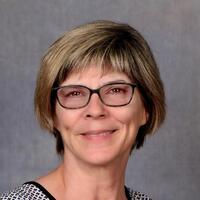 1993: Dr. Shireen Campbell Arrives at Davidson
1993: Dr. Shireen Campbell Arrives at Davidson When Dr. Campbell arrives at Davidson in 1993, creative nonfiction is only just beginning to develop as a literary genre outside of Davidson and is not reflected in the college’s curriculum. She is originally assigned to teach ENG 201: Advanced Composition alongside Dr. Lewis, which she focuses on expository prose, along with the expanding field of creative nonfiction, a genre gaining prominence in the literary world. Creative nonfiction, most simply put, uses the structural and storytelling elements of fiction but with content based on fact and truth. Dr. Campbell, a creative nonfiction writer herself, has also pursued research interests in writing center theory and practice, second language writing, digital writing, and information fluency.
-
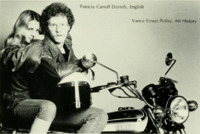 1992: Patricia Cornwell Creative Writing Scholarship
1992: Patricia Cornwell Creative Writing Scholarship In 1992, Patricia Cornwell ‘79 — at this point a best-selling author — begins funding a generous four year scholarship for creative writers, awarded annually to one student in the first-year class. As Tony Abbott notes in 1997, this scholarship “[makes] a statement that [Davidson is] interested in writing and good writers.” Since 1992, nearly a third of the recipients of the Cornwell Scholarship have written creative theses.
-
 1989: McGee Professorship of Creative Writing Established
1989: McGee Professorship of Creative Writing Established In 1989, the McGee Professorship of Creative Writing is established by John ’43 and Ruth McGee. This program brings a creative writer to campus one semester each year to teach both an introductory and advanced course in their genre of expertise and guide senior thesis writers. Since 1989, the McGee has featured poets, novelists, essayists, screenwriters, and playwrights, exposing students to experienced and diverse writers with a passion for teaching.
 2020s Pie Chart Pie chart showing number of creative theses in the 2020s broken down by genre
2020s Pie Chart Pie chart showing number of creative theses in the 2020s broken down by genre 2010s Pie Chart
2010s Pie Chart  2000s Pie Chart
2000s Pie Chart  1990s Pie Chart
1990s Pie Chart  2020: “college bound black boy” by Maurice Norman ’20 Maurice Norman ’20’s collection of poems titled “college bound black boy” contains twenty original poems. They employ several creative devices from word structuring and formatting to rhetorical devices such as alliteration, consonance, and assonance. Present themes include race, family, childhood, nostalgia, and reflection.
2020: “college bound black boy” by Maurice Norman ’20 Maurice Norman ’20’s collection of poems titled “college bound black boy” contains twenty original poems. They employ several creative devices from word structuring and formatting to rhetorical devices such as alliteration, consonance, and assonance. Present themes include race, family, childhood, nostalgia, and reflection. 2019: “Drown, Darling” by Leah Mell ’19 “Drown, Darling” by Leah Mell ’19 is a collection of poems — most incorporating death as a theme. Hollywood imagery also appears frequently among the poems, combining the ideas of mortality and performance. Mell’s poems demonstrate the exploration of darker themes as a component of creative expression in English honors theses.
2019: “Drown, Darling” by Leah Mell ’19 “Drown, Darling” by Leah Mell ’19 is a collection of poems — most incorporating death as a theme. Hollywood imagery also appears frequently among the poems, combining the ideas of mortality and performance. Mell’s poems demonstrate the exploration of darker themes as a component of creative expression in English honors theses. 2018: “On the Outside” by Emily Yates ’18 “On the Outside” by Emily Yates ’18 is a collection of four short stories following a gay man struggling to trust again after being sexually assaulted, a high schooler terrified of coming out, a married woman looking to spice up her marriage, and a lesbian woman looking for closure from her homophobic family after her father’s death. Raw and emotional, common themes among these stories include dealing with bigotry and homophobia, exploring sexuality, and the complexities of romantic relationships.
2018: “On the Outside” by Emily Yates ’18 “On the Outside” by Emily Yates ’18 is a collection of four short stories following a gay man struggling to trust again after being sexually assaulted, a high schooler terrified of coming out, a married woman looking to spice up her marriage, and a lesbian woman looking for closure from her homophobic family after her father’s death. Raw and emotional, common themes among these stories include dealing with bigotry and homophobia, exploring sexuality, and the complexities of romantic relationships. 2018: “The Division” by Cordelia Wilks ’18 For her senior thesis, Cordelia Wilks ’18 creates a documentary film exploring Davidson Athletics — its culture, talent, and long-term goals as compared to other Division I schools. Wilks is the first student to make a film as an English honors thesis since the first one by Jason Ferris in 1999. In 2021, she remains the only female student to do so. During Wilks’ time at Davidson, two visiting McGee professors are filmmakers: Ali Selim and Thomas Gilroy. The presence of these two filmmakers at Davidson reflects student demand for film professors, likely stemming from Dr. Zoran Kuzmanovich’s course Film as a Narrative Art and Dr. Paul Miller’s course Documentary Film.
2018: “The Division” by Cordelia Wilks ’18 For her senior thesis, Cordelia Wilks ’18 creates a documentary film exploring Davidson Athletics — its culture, talent, and long-term goals as compared to other Division I schools. Wilks is the first student to make a film as an English honors thesis since the first one by Jason Ferris in 1999. In 2021, she remains the only female student to do so. During Wilks’ time at Davidson, two visiting McGee professors are filmmakers: Ali Selim and Thomas Gilroy. The presence of these two filmmakers at Davidson reflects student demand for film professors, likely stemming from Dr. Zoran Kuzmanovich’s course Film as a Narrative Art and Dr. Paul Miller’s course Documentary Film. 2016: Abbott English Honors Program Founded The Abbott English Honors Program is established in 2016 through the generous donation of Professor Tony Abbott and his wife Susan. After teaching at Davidson for nearly four decades, Professor Abbott is credited with much of the department's development in creative writing. With these additional funds, the Abbott English Honors Program will provide even more support and structure for English majors pursuing both critical and creative honors theses.
2016: Abbott English Honors Program Founded The Abbott English Honors Program is established in 2016 through the generous donation of Professor Tony Abbott and his wife Susan. After teaching at Davidson for nearly four decades, Professor Abbott is credited with much of the department's development in creative writing. With these additional funds, the Abbott English Honors Program will provide even more support and structure for English majors pursuing both critical and creative honors theses. 2015: “Be Nice: Reconsidering the Female Sitcom Lead and an Original Pilot” by Anne Sellers ’15 In 2015, Anne Sellers ’15 writes a screenplay as one half of her thesis, following a critical piece on Mindy Kaling’s show The Mindy Project. Sellers’ screenplay, “Be Nice,” follows a young female intern at an advertising agency as she tries to balance her career ambitions with a determination to remain honest and true to herself. Sellers aims to create a character “who both occupies a realistic subject position and radically subverts it, and can reach viewers in such a way that they begin to understand better and evaluate more thoughtfully their own social experience” (Sellers 17). In her acknowledgement, Sellers thanks the 2015 McGee Professor, award-winning director and screenwriter Ali Selim. She writes, “I will remember what he taught me as long as I consider myself a writer” — again showing the positive impact of visiting creative writers on student interest in the subject (iii).
2015: “Be Nice: Reconsidering the Female Sitcom Lead and an Original Pilot” by Anne Sellers ’15 In 2015, Anne Sellers ’15 writes a screenplay as one half of her thesis, following a critical piece on Mindy Kaling’s show The Mindy Project. Sellers’ screenplay, “Be Nice,” follows a young female intern at an advertising agency as she tries to balance her career ambitions with a determination to remain honest and true to herself. Sellers aims to create a character “who both occupies a realistic subject position and radically subverts it, and can reach viewers in such a way that they begin to understand better and evaluate more thoughtfully their own social experience” (Sellers 17). In her acknowledgement, Sellers thanks the 2015 McGee Professor, award-winning director and screenwriter Ali Selim. She writes, “I will remember what he taught me as long as I consider myself a writer” — again showing the positive impact of visiting creative writers on student interest in the subject (iii). 2012: Thomas Mallon as McGee Professor of Creative Writing In the spring of 2012, novelist, essayist, and critic Thomas Mallon joins the English department as the visiting McGee professor. Mallon is the author of eight novels, several nonfiction books, and two collections of essays. He teaches ENG 301: Creative Nonfiction and ENG 304: Writing Fiction 2. His goal for these two courses is for his students to “understand some sense of the relationship between fiction and nonfiction, particularly as a narrative” (Lewis 1).
2012: Thomas Mallon as McGee Professor of Creative Writing In the spring of 2012, novelist, essayist, and critic Thomas Mallon joins the English department as the visiting McGee professor. Mallon is the author of eight novels, several nonfiction books, and two collections of essays. He teaches ENG 301: Creative Nonfiction and ENG 304: Writing Fiction 2. His goal for these two courses is for his students to “understand some sense of the relationship between fiction and nonfiction, particularly as a narrative” (Lewis 1). 2009: “Playing Hide and Seek” by David M. Palko ’09 In 2009, David Palko writes a play for his English honors thesis entitled “Playing Hide and Seek.” This play is performed live on April 6, 2009 in Tyler-Tallman Hall of the Sloan Music Center. The play follows the story of a brother and sister and their father. In Palko’s words, “Unlike a typical domestic drama, however, this story takes place in the psyche, following Ryan [the brother] through a reflective reverie. As a result, the action fluidly fluctuates between memories that can be validated and imagined past events, at times blurring the two” (Palko 42). Music also plays a large role in this production, acting as a “soundtrack to Ryan’s thoughts” (Palko 45). Rona Munro serves as Palko’s reader for this project.
2009: “Playing Hide and Seek” by David M. Palko ’09 In 2009, David Palko writes a play for his English honors thesis entitled “Playing Hide and Seek.” This play is performed live on April 6, 2009 in Tyler-Tallman Hall of the Sloan Music Center. The play follows the story of a brother and sister and their father. In Palko’s words, “Unlike a typical domestic drama, however, this story takes place in the psyche, following Ryan [the brother] through a reflective reverie. As a result, the action fluidly fluctuates between memories that can be validated and imagined past events, at times blurring the two” (Palko 42). Music also plays a large role in this production, acting as a “soundtrack to Ryan’s thoughts” (Palko 45). Rona Munro serves as Palko’s reader for this project. 2008: Rona Munro as McGee Professor of Creative Writing In the fall of 2008, the McGee Professor of Creative Writing is Rona Munro, a Scottish playwright with experience writing for theatre, radio, and television. During her time at Davidson, she and her students collaborate with the Royal Shakespeare Company to put on a production of her play Little Eagles. Munro also teaches introductory and advanced courses on writing plays.
2008: Rona Munro as McGee Professor of Creative Writing In the fall of 2008, the McGee Professor of Creative Writing is Rona Munro, a Scottish playwright with experience writing for theatre, radio, and television. During her time at Davidson, she and her students collaborate with the Royal Shakespeare Company to put on a production of her play Little Eagles. Munro also teaches introductory and advanced courses on writing plays. 2005: “Five-Point Turn” by David Pope ’05 “Five-Point Turn” by David Pope ’05 is a childhood memoir filled with memories about Pope’s family. The piece is written with a personal tone, reflecting how students embrace memoir as a genre of self-expression within creative nonfiction. Scientific terms and references are also incorporated into the writing, potentially showing a researched element of the piece.
2005: “Five-Point Turn” by David Pope ’05 “Five-Point Turn” by David Pope ’05 is a childhood memoir filled with memories about Pope’s family. The piece is written with a personal tone, reflecting how students embrace memoir as a genre of self-expression within creative nonfiction. Scientific terms and references are also incorporated into the writing, potentially showing a researched element of the piece. 2004: “The Cage: The Lives and Experiences of Female Bodybuilders and Anorexic Women” by Alison Marie Holby ’04 Alison Marie Holby ’04’s English honors thesis entitled “The Cage: The Lives and Experience of Female Bodybuilders and Anorexic Women” is an example of literary journalism guided by Dr. Lewis’s teachings. In this project, Holby explores how female bodybuilders and anorexic women respond to cultural expectations of women in different yet related ways. Literary journalism departs from traditional journalism in the sense that it blurs a line between objectivity and subjectivity, often placing the writer and their experiences into the story. Structurally, these pieces are organized like fiction, with plot and arc, in order to create a story and engage the reader. Literary journalism aims to inspire the reader to look at some aspect of the world — in Holby’s case, “gendered expectations about body and performance” — in a slightly different way (Holby 2).
2004: “The Cage: The Lives and Experiences of Female Bodybuilders and Anorexic Women” by Alison Marie Holby ’04 Alison Marie Holby ’04’s English honors thesis entitled “The Cage: The Lives and Experience of Female Bodybuilders and Anorexic Women” is an example of literary journalism guided by Dr. Lewis’s teachings. In this project, Holby explores how female bodybuilders and anorexic women respond to cultural expectations of women in different yet related ways. Literary journalism departs from traditional journalism in the sense that it blurs a line between objectivity and subjectivity, often placing the writer and their experiences into the story. Structurally, these pieces are organized like fiction, with plot and arc, in order to create a story and engage the reader. Literary journalism aims to inspire the reader to look at some aspect of the world — in Holby’s case, “gendered expectations about body and performance” — in a slightly different way (Holby 2). 1999: “Mikey: A Screenplay” by Jason Ferris ’99 In 1999, Cornwell Scholar Jason Ferris produces the first screenplay and film ever created as an English honors thesis. His project, “Mikey: A Screenplay,” is about a young man, freshly eighteen, who has aged out of the orphanage he grew up in and befriends a bored suburban housewife whose husband is cheating on her. In the preface to his screenplay, Ferris explains that his work reflects questions about subjectivity and media and whether the former can exist in a world dominated by the latter.
1999: “Mikey: A Screenplay” by Jason Ferris ’99 In 1999, Cornwell Scholar Jason Ferris produces the first screenplay and film ever created as an English honors thesis. His project, “Mikey: A Screenplay,” is about a young man, freshly eighteen, who has aged out of the orphanage he grew up in and befriends a bored suburban housewife whose husband is cheating on her. In the preface to his screenplay, Ferris explains that his work reflects questions about subjectivity and media and whether the former can exist in a world dominated by the latter. 1998: Professor Alan Michael Parker Arrives at Davidson Professor Parker is hired by the English department in 1998 as the coordinator of the literary calendar, marking an increased commitment to bringing creative voices to campus. Parker begins his Davidson career teaching Introduction to Creative Writing with a focus on poetry and fiction, reflecting his personal interests and practices as a creative writer. This course, like all other creative writing classes at the time, requires “permission of the instructor based upon review of writing samples.” Professor Parker is the author or editor of eighteen books and has edited five scholarly works. Additionally, he has published over 250 poems and stories to numerous journals, many of which have been awarded with various forms of recognition.
1998: Professor Alan Michael Parker Arrives at Davidson Professor Parker is hired by the English department in 1998 as the coordinator of the literary calendar, marking an increased commitment to bringing creative voices to campus. Parker begins his Davidson career teaching Introduction to Creative Writing with a focus on poetry and fiction, reflecting his personal interests and practices as a creative writer. This course, like all other creative writing classes at the time, requires “permission of the instructor based upon review of writing samples.” Professor Parker is the author or editor of eighteen books and has edited five scholarly works. Additionally, he has published over 250 poems and stories to numerous journals, many of which have been awarded with various forms of recognition. 1996: “Breaking the Silence: Five Stories from Contemporary Women” by Laura Susan Leibfreid ‘96 In “Breaking the Silence: Five Stories from Contemporary Women” by Laura Susan Leibfreid, each short story features one of the author’s chosen themes: rape, racism, incest, lesbianism, and eating disorders. The stories are titled “Casanova,” “Cricket Prey,” “Call me Lolita,” “Me An Jo,” and “There’s a Monster in my Mouth.” Combined, they contribute to a larger feminist narrative. This thesis reflects creative self-expression through fiction as the author notes her passion for feminism in the preface.
1996: “Breaking the Silence: Five Stories from Contemporary Women” by Laura Susan Leibfreid ‘96 In “Breaking the Silence: Five Stories from Contemporary Women” by Laura Susan Leibfreid, each short story features one of the author’s chosen themes: rape, racism, incest, lesbianism, and eating disorders. The stories are titled “Casanova,” “Cricket Prey,” “Call me Lolita,” “Me An Jo,” and “There’s a Monster in my Mouth.” Combined, they contribute to a larger feminist narrative. This thesis reflects creative self-expression through fiction as the author notes her passion for feminism in the preface. 1996: "For Love of Country" by Edward Acle ’96 Following in Patricia Cornwell’s footsteps, Edward Acle writes a novel for his senior thesis — a work of historical fiction set in Trinidad in the first half of the nineteenth century with a focus on themes of family, patriotism, love, and war. This project is directed by Dr. Abbott who, throughout Acle’s four years at Davidson, has been teaching an introductory creative writing course with a focus on fiction and poetry, which Acle likely took.
1996: "For Love of Country" by Edward Acle ’96 Following in Patricia Cornwell’s footsteps, Edward Acle writes a novel for his senior thesis — a work of historical fiction set in Trinidad in the first half of the nineteenth century with a focus on themes of family, patriotism, love, and war. This project is directed by Dr. Abbott who, throughout Acle’s four years at Davidson, has been teaching an introductory creative writing course with a focus on fiction and poetry, which Acle likely took. 1996: First Creative Thesis Since 1979 By 1995, Dr. Campbell has successfully petitioned to have ENG 201 raised to a 300-level course focused on intermediate-level creative nonfiction writing. Together, Dr. Campbell and Dr. Lewis continue using ENG 201: Expository Prose for other types of nonfiction writing, including community-based publications and professional writing. By the turn of the century, creative writing courses are offered from the 200 to the 400 level, showing an expanding desire to bring creative pursuits into the classroom. New interests among the faculty, such as creative nonfiction, will also open doors for student creative writers.
1996: First Creative Thesis Since 1979 By 1995, Dr. Campbell has successfully petitioned to have ENG 201 raised to a 300-level course focused on intermediate-level creative nonfiction writing. Together, Dr. Campbell and Dr. Lewis continue using ENG 201: Expository Prose for other types of nonfiction writing, including community-based publications and professional writing. By the turn of the century, creative writing courses are offered from the 200 to the 400 level, showing an expanding desire to bring creative pursuits into the classroom. New interests among the faculty, such as creative nonfiction, will also open doors for student creative writers. 1995: ENG 301: Creative Nonfiction is Born By 1995, Dr. Campbell has successfully petitioned to have ENG 201 raised to a 300-level course focused on intermediate-level creative nonfiction writing. Together, Dr. Campbell and Dr. Lewis continue using ENG 201: Expository Prose for other types of nonfiction writing, including community-based publications and professional writing. By the turn of the century, creative writing courses are offered from the 200 to the 400 level, showing an expanding desire to bring creative pursuits into the classroom. New interests among the faculty, such as creative nonfiction, will also open doors for student creative writers.
1995: ENG 301: Creative Nonfiction is Born By 1995, Dr. Campbell has successfully petitioned to have ENG 201 raised to a 300-level course focused on intermediate-level creative nonfiction writing. Together, Dr. Campbell and Dr. Lewis continue using ENG 201: Expository Prose for other types of nonfiction writing, including community-based publications and professional writing. By the turn of the century, creative writing courses are offered from the 200 to the 400 level, showing an expanding desire to bring creative pursuits into the classroom. New interests among the faculty, such as creative nonfiction, will also open doors for student creative writers. 1994: Dr. Brenda Flanagan Arrives at Davidson In 1994, Brenda Flanagan comes to Davidson and begins teaching Caribbean and African-American literature, introducing new topics to the curriculum. She also teaches fiction writing courses — the beginning of an impactful career as a mentor for fiction writers. In a 2018 article in The Davidsonian, Margot Parker ’21 says of Flanagan, “It occurs to me that what makes Flanagan such a good professor and what makes her such a good creative writer are probably the same thing: her steady, pedagogical love.” Dr. Flannagan has published her fiction and poetry in no less than nine journals along with her essays which have appeared in two. She has also published plays, a collection of stories, and her prize-winning novel, You Alone Are Dancing (University of Michigan Press 1996.)
1994: Dr. Brenda Flanagan Arrives at Davidson In 1994, Brenda Flanagan comes to Davidson and begins teaching Caribbean and African-American literature, introducing new topics to the curriculum. She also teaches fiction writing courses — the beginning of an impactful career as a mentor for fiction writers. In a 2018 article in The Davidsonian, Margot Parker ’21 says of Flanagan, “It occurs to me that what makes Flanagan such a good professor and what makes her such a good creative writer are probably the same thing: her steady, pedagogical love.” Dr. Flannagan has published her fiction and poetry in no less than nine journals along with her essays which have appeared in two. She has also published plays, a collection of stories, and her prize-winning novel, You Alone Are Dancing (University of Michigan Press 1996.) 1993: Dr. Shireen Campbell Arrives at Davidson When Dr. Campbell arrives at Davidson in 1993, creative nonfiction is only just beginning to develop as a literary genre outside of Davidson and is not reflected in the college’s curriculum. She is originally assigned to teach ENG 201: Advanced Composition alongside Dr. Lewis, which she focuses on expository prose, along with the expanding field of creative nonfiction, a genre gaining prominence in the literary world. Creative nonfiction, most simply put, uses the structural and storytelling elements of fiction but with content based on fact and truth. Dr. Campbell, a creative nonfiction writer herself, has also pursued research interests in writing center theory and practice, second language writing, digital writing, and information fluency.
1993: Dr. Shireen Campbell Arrives at Davidson When Dr. Campbell arrives at Davidson in 1993, creative nonfiction is only just beginning to develop as a literary genre outside of Davidson and is not reflected in the college’s curriculum. She is originally assigned to teach ENG 201: Advanced Composition alongside Dr. Lewis, which she focuses on expository prose, along with the expanding field of creative nonfiction, a genre gaining prominence in the literary world. Creative nonfiction, most simply put, uses the structural and storytelling elements of fiction but with content based on fact and truth. Dr. Campbell, a creative nonfiction writer herself, has also pursued research interests in writing center theory and practice, second language writing, digital writing, and information fluency. 1992: Patricia Cornwell Creative Writing Scholarship In 1992, Patricia Cornwell ‘79 — at this point a best-selling author — begins funding a generous four year scholarship for creative writers, awarded annually to one student in the first-year class. As Tony Abbott notes in 1997, this scholarship “[makes] a statement that [Davidson is] interested in writing and good writers.” Since 1992, nearly a third of the recipients of the Cornwell Scholarship have written creative theses.
1992: Patricia Cornwell Creative Writing Scholarship In 1992, Patricia Cornwell ‘79 — at this point a best-selling author — begins funding a generous four year scholarship for creative writers, awarded annually to one student in the first-year class. As Tony Abbott notes in 1997, this scholarship “[makes] a statement that [Davidson is] interested in writing and good writers.” Since 1992, nearly a third of the recipients of the Cornwell Scholarship have written creative theses. 1989: McGee Professorship of Creative Writing Established In 1989, the McGee Professorship of Creative Writing is established by John ’43 and Ruth McGee. This program brings a creative writer to campus one semester each year to teach both an introductory and advanced course in their genre of expertise and guide senior thesis writers. Since 1989, the McGee has featured poets, novelists, essayists, screenwriters, and playwrights, exposing students to experienced and diverse writers with a passion for teaching.
1989: McGee Professorship of Creative Writing Established In 1989, the McGee Professorship of Creative Writing is established by John ’43 and Ruth McGee. This program brings a creative writer to campus one semester each year to teach both an introductory and advanced course in their genre of expertise and guide senior thesis writers. Since 1989, the McGee has featured poets, novelists, essayists, screenwriters, and playwrights, exposing students to experienced and diverse writers with a passion for teaching.